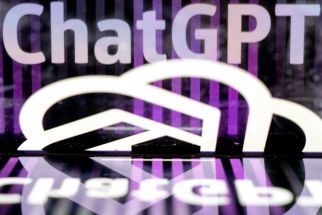Hands on with the HoloLens
MANILA, Philippines – At its annual developer’s conference held in San Francisco earlier this month, the company announced that HoloLens, the world’s first and only untethered holographic computer, will start shipping to Windows developers and Microsoft enterprise partners.
Think of Star Trek’s holodeck or the holograms in Star Wars people summon when they want to communicate with a person in another galaxy. The HoloLens headset works almost the same way. It allows people to see and interact with 3D images and immerse themselves in a mixed world of people and holograms.
This experience of a mixed reality in one’s head is completely fascinating at the moment - science fiction turned real. Microsoft, however, is bullish that in the years to come, computer-generated holography will find its way in the real world with real useful applications.
Early Applications
Alex Kipman, technical fellow at the Windows Devices Group at Microsoft, revealed at the conference that the National Aeronautics and Space Administration (NASA) is actually Microsoft’s first partner in the initiative.
Over the past year, the space agency has already developed applications that are now deployed in production.
“Through a collaboration with Microsoft, we are building applications to support engineers responsible for the design and assembly of spacecraft. Astronauts working on the Internal Space Station and scientists are now using our Mars tool OnSight in mission operations,” Jeff Norris, project manager at NASA’s Jet Propulsion Laboratory (JPL) explained in a presentation video.
OnSight was used to create an immersive experience that allows people to explore the planet Mars. This summer in the US, the project called “Destination Mars” will be on view at the Kennedy Space Center visitor complex.
The HoloLens Development Edition will first be sold only to developers who applied for the program. The goal is to encourage and inspire developers to build more apps for the HoloLens, but Microsoft itself has been leading the charge.
Last year, it asked developers to share their ideas on how holographic computing may transform our world. Some 5,000 amazing ideas have been contributed such as making anime come to life, creating a holographic virtual assistant, building a prehistoric world, games and a command center, among others.
From these ideas, Microsoft chose one project to build: an application that allows people to explore the Milky Way Galaxy using gestures and voice commands. The app, which was eventually called Galaxy Explorer, will be on Windows Store and all of the code will be made available online via GitHub.
Holo World
But what is it really like to have that computer on your head? Well, the headset feels like you are wearing one of those huge, heavy surround sound headphones and you feel like you are the ultimate man from the future.
The one-hour crash course on HoloLens at the Holographic Academy at the conference, however, revealed many facets about holography now.
Last year, Microsoft introduced five components to creating holographic images - the use of gaze, gesture, and voice inputs for creating new holograms, spatial sound for finding new holograms, and spatial mapping for teaching holograms about the environment.
This year, it introduced a sixth component - world coordinates - which allow developers to save the location of holograms and share them with each other.
With all these components combined, Angela Hillier, a member of the development platform for HoloLens, said developers can create rich experiences with the HoloLens that can transform how people learn, interact, socialize and collaborate with each other.
“If you have friends, family, co-workers who live and work remotely, they no longer have to feel so distant as they can join you in holographic form,” she said. “You can work side by side together to solve complex, real-world problems.”
The hands-on demo actually gave participants the experience of seeing a hologram, interacting with it, discovering other holograms, sharing coordinates, and placing holograms on surfaces. The fun part is pinching it and bouncing it off walls and surfaces.
Hillier said developing for the future is fun. “We need an active community of artists, programmers, designers, audio engineers and storytellers who are all willing to push the bounds of their imagination,” she said.
While holographic computing is still in the nascent stage, Kipman said Microsoft will be marking another step in its journey in interacting with computers in more personal ways this year.
- Latest


























